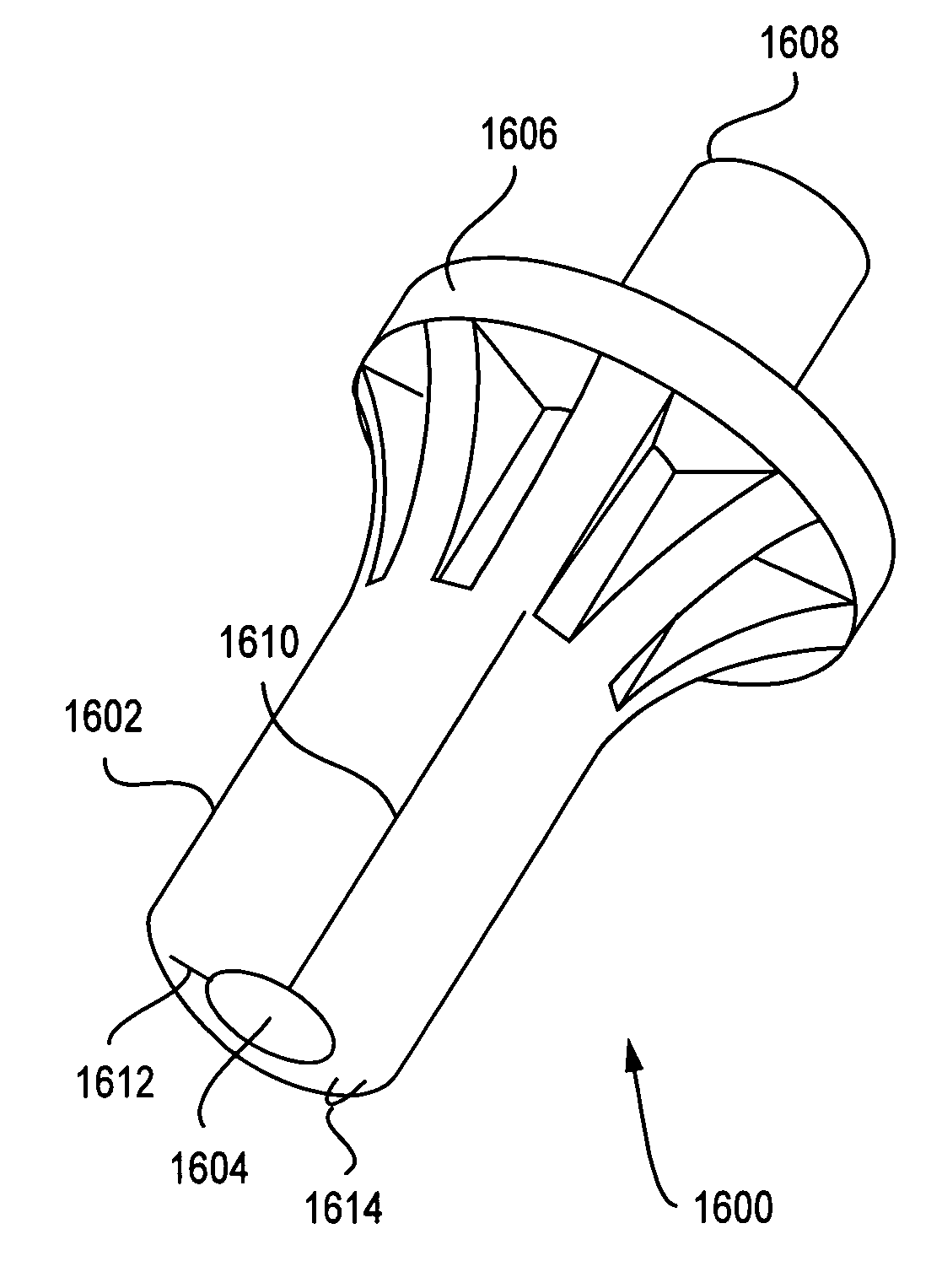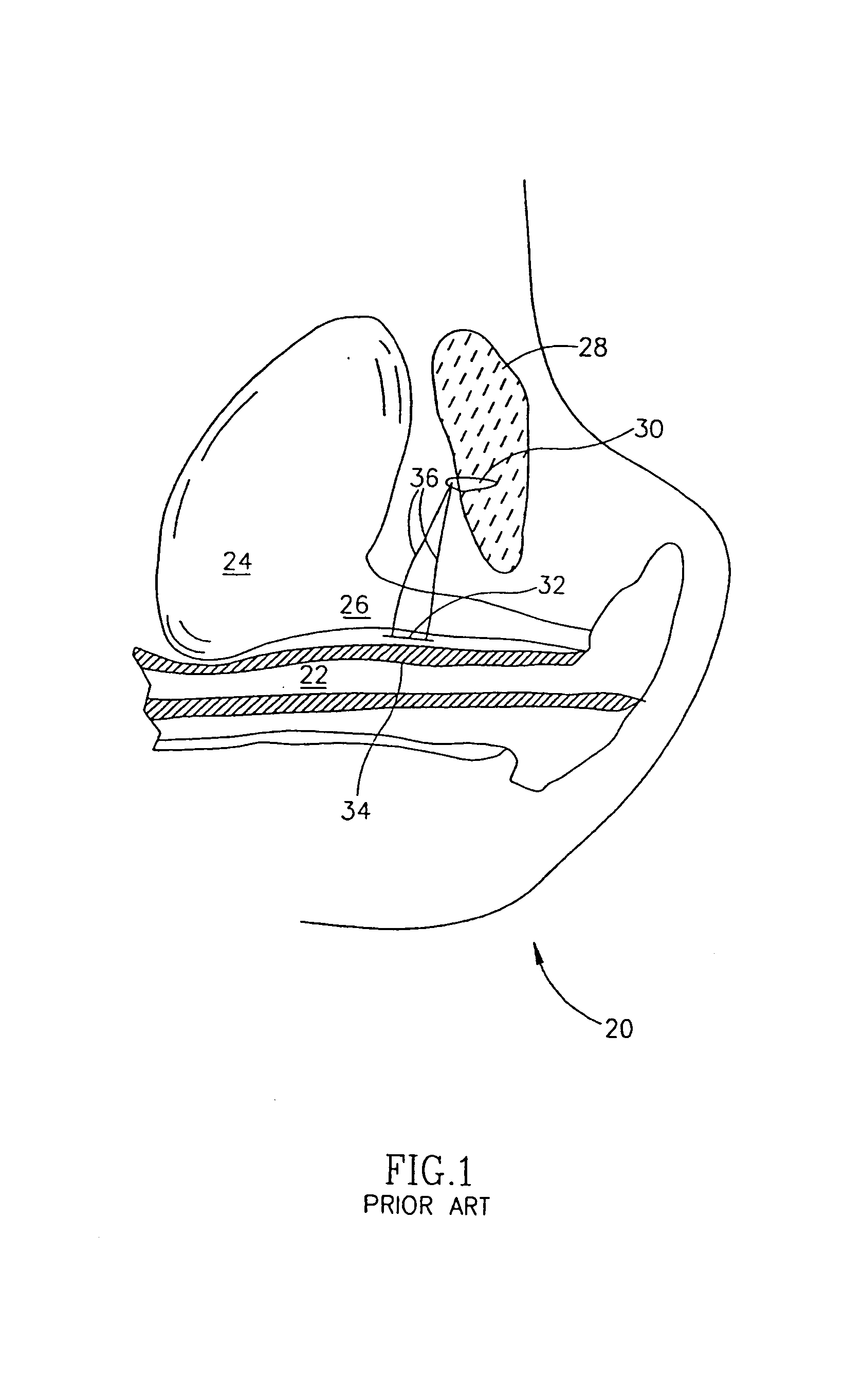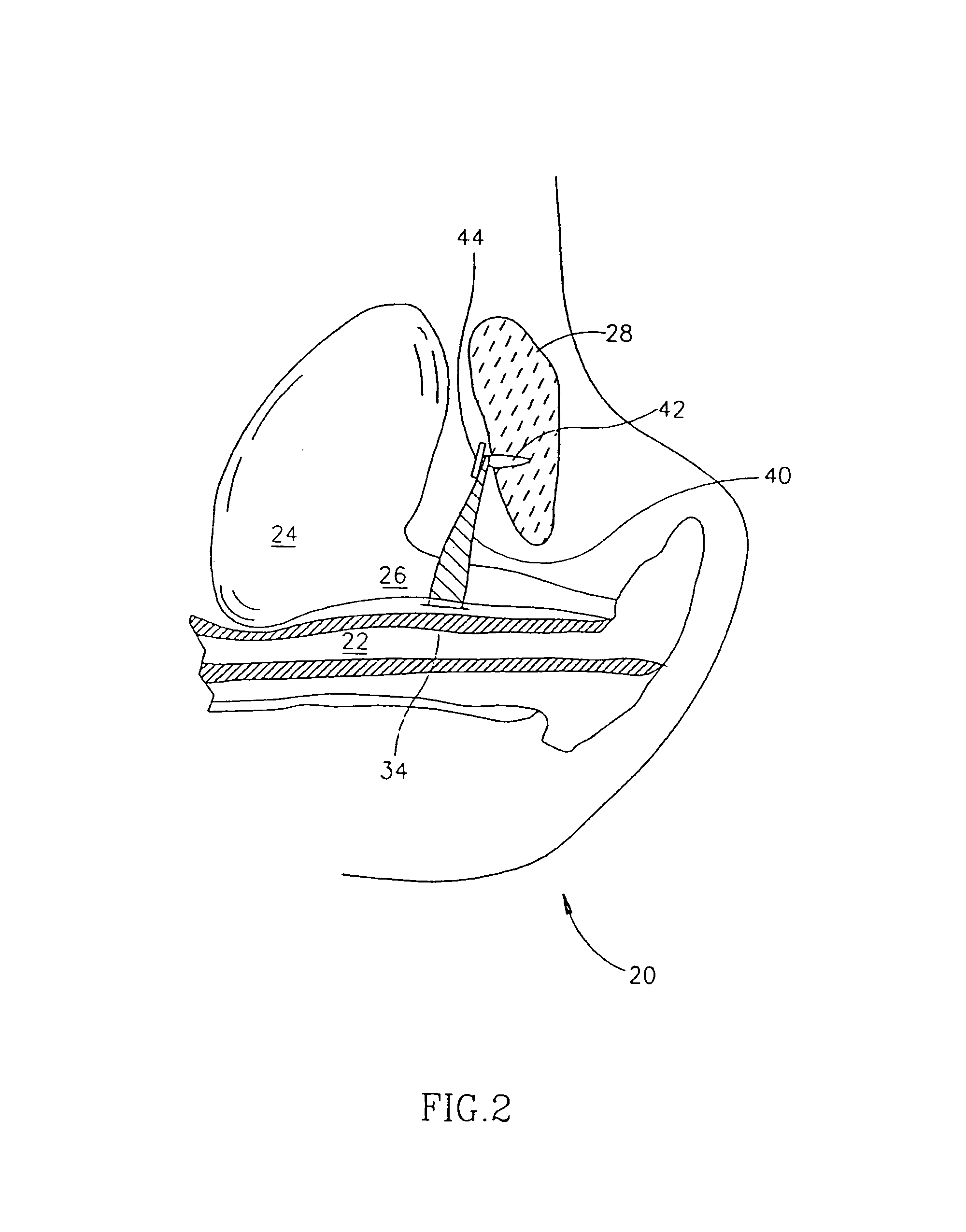Tack device with shield
a shield and tack technology, applied in the field of incontinence treatment methods and apparatus, can solve the problems of urinary incontinence being a common medical complaint, bare sutures can cut into and damage the urethra, and the knotting of sutures (after they are tightened) takes skill and tim
- Summary
- Abstract
- Description
- Claims
- Application Information
AI Technical Summary
Benefits of technology
Problems solved by technology
Method used
Image
Examples
Embodiment Construction
[0084]FIG. 2 is a schematic cut-through illustration of a pubic area during a bladder neck support operation, in accordance with a preferred embodiment of the invention. A sling 40 is shown as being tacked directly to pubic bone 28, by a tack 42 and being held in place by a head 44 of tack 42. In a preferred embodiment of the invention, a shaft of tack 42 pierces sling 40. Alternatively or additionally, the sling is held against the bone by friction, caused by head 44 urging sling 40 against pubic bone 28 (possibly through intervening tissue).
[0085]In a preferred embodiment of the invention, the following method is used to attach the sling to the bone:
[0086](a) a first tack is tacked (preferably through sling 40) into a first location on pubic bone 28;
[0087](b) the sling is inserted between vagina 22 and bladder neck 26 or the urethra: access is preferably via one or more incisions in the vaginal wall;
[0088](c) a second tack is tacked through the sling and into a second location on ...
PUM
 Login to View More
Login to View More Abstract
Description
Claims
Application Information
 Login to View More
Login to View More - R&D
- Intellectual Property
- Life Sciences
- Materials
- Tech Scout
- Unparalleled Data Quality
- Higher Quality Content
- 60% Fewer Hallucinations
Browse by: Latest US Patents, China's latest patents, Technical Efficacy Thesaurus, Application Domain, Technology Topic, Popular Technical Reports.
© 2025 PatSnap. All rights reserved.Legal|Privacy policy|Modern Slavery Act Transparency Statement|Sitemap|About US| Contact US: help@patsnap.com



